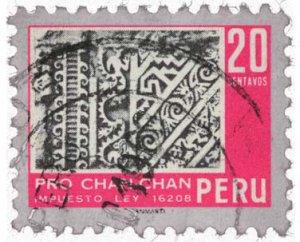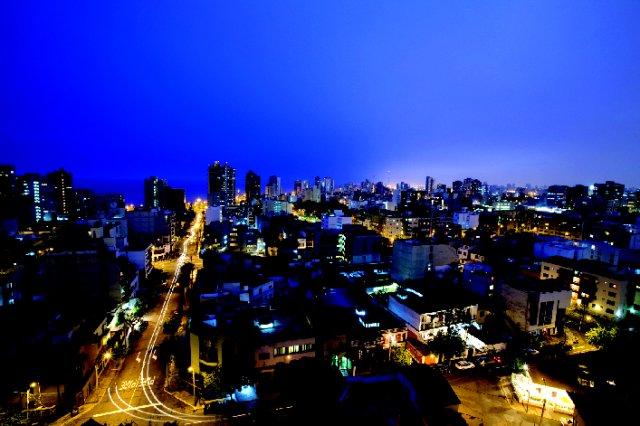Inside Out: Business in Peru

By Evan Jaqua with Timm Tuttle
J@pan Inc’s column concerning business conditions in an emerging market
Stretching across the west coast of South America, ancient people, most notably the Incas, were drawn to what is now Peru by its immense natural bounty, mineral wealth, the rich Amazon rainforest, the Andes, and an abundant coastline.
Today, Peru is under the radar for many businesses around the world, including in faraway Japan. Unfortunate, considering that after centuries of difficulties stretching from the Conquistador era through the troubled 1980s, the Peru of today is undergoing a true renaissance, with startling economic growth, low inflation, growing integration with the world economy, and the firm establishment of a stable democratic government. Not surprisingly, the US Commercial Service describes the country as “...the hidden commercial gem of Latin America—a diverse, export- driven economy characterized by open markets and fiscal prudence.”
Peru is one of the world’s largest producers of precious metals, ranking 1st, 2nd, and 5th in production of silver, copper and gold, respectively. As well as metals, Peruvian seas support the world’s largest fish meal industry and there is also increasing activity in energy exploration. The Camisea natural gas project, which is currently under development, is expected to tap into the equivalent of 2.4 billion barrels of oil—40 years’ worth of oil at Peru’s current consumption rate of 60 million barrels per year. The US State Department predicts that additional natural gas and petroleum supplies will soon make Peru a net energy exporter.
As a result of its historical and geographical curiosities, tourism is also on the rise. According to the Peru Japan Association, there has been a 15% annual increase during the last 5 years from Japanese tourists, exceeding 40,000 in 2007.
A Latin Japan?
Immigration from Japan to Peru began in 1899 when 790 Japanese took their increasingly superfluous traditional farming skills in Peru under a government-sponsored migration program. By 1923, over 100 groups of Japanese had arrived to Peru, almost all under temporary labor contracts to work in plantations such as the sugar and cotton fields.
There are now over 90,000 Peruvians of Japanese descent (Nikkei), the largest ethnic group in South America after Brazil. The community has for the most part prospered and is well regarded; a prominent electronics store bearing the name of its founder, Carlos Hiraoka, is one example of Peru’s many flourishing Nikkei-founded businesses. However, there have been rough periods as well, particularly during WWII when Nikkei were subject to discriminatory laws and even had properties seized. During those times, many were forced into hiding or had to flee the country.
In 1990, Alberto Fujimori took the presidency as a dark horse candidate and became the nation’s most famous representative of the Nikkei community. Some say that Peruvians of native descent trusted Fujimori more than the long-dominant political elites of Spanish descent, aiding his presidential bid. For most of his 10 years in power, Fujimori enjoyed wide popularity, but by 2000, scandals forced his self-exile to Japan. Last year, he was extradited to Peru after being detained during a visit to Chile in 2005. Fujimori is currently on trial in Peru on corruption and human rights charges, yet is considered by many Peruvians as a hero who defeated the Shining Path communism terrorists and placed the country on its current road to prosperity.
On the fast track
Ex-President Alberto Fujimori (1990~2000) initiated a pro-business stance that continues today. Thanks to market-oriented reforms, privatization, and measures to promote trade and attract investment, Peru’s economy is on the fast-track: 7% GDP growth in 2007, 8% in 2006, and similarly impressive figures stretching back for many of the years since sustained growth began in 1993.
The current Garcia administration is impressing outsiders with efficient economic management, increased revenue collection, ratings upgrades on government bonds, and decentralization initiatives.
Peru’s stock market has taken notice: the Lima General index rose 36% last year, the sixth consecutive annual gain and one of the best returns in the world. The index’s performance in the first quarter of 2008 has been strong as well.
Since late 2007, Peru has concluded FTAs with the US, Canada, and Singapore, adding to those already in place with other Latin American countries. Future plans for FTA include China in 2008, the EU (still under negotiation) and Japan which is targeted for 2010. Support within Peru is also strong for FTAs, an example being a recent poll which revealed that 72% of Peruvians approve of signing an FTA with the European Union.
 Lima
Lima
Japan is Peru’s 5th largest export market although trade between the two nations is not high. According to the Japanese Embassy in Peru, Japan accounts for only about 5% of imports and exports to Peru. Japanese exports are primarily vehicle related and imports to Japan are mostly mining products and fish meal. The Japan- Peruvian FTA would eliminate tariffs for Japanese exporters, such as the 9% tariff currently applied to Japanese autos.
MOFA reports that investments from Japan to Peru reached 112 cases in 2004, totaling US$785 million in value. Meanwhile China, with an eye on Peru’s natural resources, is expected to invest over a cumulative $10 billion by 2015.
The South American risk
South American countries have long suffered from the image of political instability, internal rebellions, high inflation, and corruption. However, after a period of volatility, democracy has taken root, as exemplified by this decade’s open elections. The country’s infamous battle with the Maoist Shining Path rebels effectively ended in 1992 with the capture of the group’s leader. However, on the corruption front, Peru is still considerably worse than Japan and the US, the World Audit placing them on the same level as Brazil, China and India and fortunately, notably better than Russia.
Concerns remain, however. The 1980s saw hyperinflation and although inflation has now been tamed, the combination of fast economic growth and high oil prices will exert upward pressure, the effects of which will need to be closely monitored.
Despite noteworthy improvements, underemployment and poverty remain problems as well. If rising prosperity doesn’t start helping the large percentage of the population living below the poverty line, political observers see the risk of a Venezuelan-type populist movement, and a Hugo Chavez-style government would almost certainly have negative consequences for international firms seeking to expand into Peru. But Peru is increasingly becoming a major economic power in an increasingly important region of the world. With the fifth-largest population in Latin America and strong, stable growth, there are good reasons to consider Peru as a gateway to Latin American markets, or as a key market on its own. JI
DATA
| Area: | 1.28 million sq. km (approx. 3x Japan’s) |
| Population: | 29 million (approx.1/4 Japan’s) |
| Government: | Constitutional republic (1993 constitution) |
| GDP: | $93.3 billion (approx. 1/50 Japan’s) |
| Economy: | Services (45%), manufacturing (17%, food, textiles, metals, refining, paper, chemicals, fish meal); agriculture (9%, coffee, asparagus, others), mining (7%), others. |
Sources: US State Department, CIA, El Comercio (2006)
Evan Jaqua with Timm Tuttle are owners of Paccess Inc, assisting companies with market entry, strategic partner search, and trade development, in the US, Japan, and Latin America. Visit www.paccess.com, or contact evan@paccess.NET (English, Japanese, or Spanish OK)





